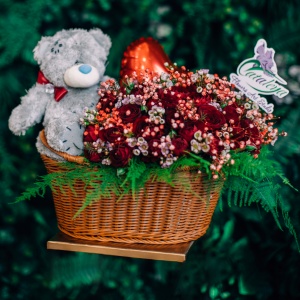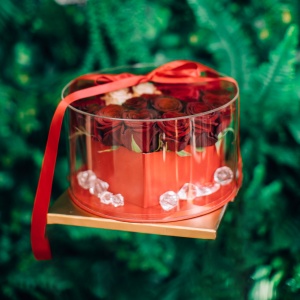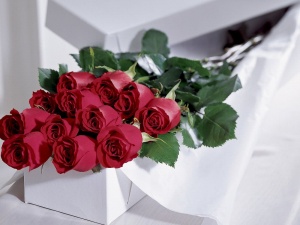Second life for flower bouquet
Many people do not like to receive bouquets as a gift just because sooner or later the flowers will fade and end up in the trash. We offer you to give them a second life.
First of all, let us remember that we are not talking about a rose bush, but a bouquet of roses. That is why the process is laborious, it can be accompanied by failures.
Gardeners unanimously claim that the donor bush should grow on its own, without chemical additives. The cut stem should be planted a few hours after cutting, otherwise, nothing will work.
Let’s choose flowers.
No matter how luxurious the flowers look in the shops, not all of them can be planted. Flowers grown for commercial purposes mainly contain chemical additives. Only in this way moving flowers from one country to another is possible. These chemical additives are safe for humans, but they do not allow the flower to grow.
The most suitable flowers for local growing areas are the ones that do not need any chemical additives for storage.
The next thing to pay attention to is the color of the flower.
White, flesh-colored, yellow, or exotic varieties, two-colored or purple roses will not grow, no matter how hard you try.
Red, pink or dark red roses are more likely to succeed, especially if you are a beginner.
Stem condition is very important, that they be firm, solid, and evenly green. And the parts where the owners grow from should be lighter green.
Flowers grow best in warm weather, so it’s preferable to do these things in summer
Save this post to add it to your summer to-do list.
To grow flowers you should pay attention to two things․ Cut the stem correctly and choose the option of growing it.
Find the area where the 3 sprouts are located. Make a straight cut 2 cm from the top. Measure 1.5 cm from the inside and cut the rest at a 45-degree angle. Different types of cuts help not to confuse which side you will plant the flower from.
You can get several saplings from one stem, the thing important is that the stem is fresh and harmless.
Use a knife to cut, soak it in alcohol or boiled water to kill microbes. Scissors are not a convenient option, they will squeeze the stem, nothing will grow from it.
Clean all the leaves beside one. Cut the other one in half. This is necessary so that the nutrients are not absorbed by the leaf and the other half is left for photosynthesis.
Treat the cut with root growth promoter substance․ You can find them in plant stores.
The more seedlings you prepare, the more likely it is that you will have a result. That is why gardeners recommend preparing 10 seedlings at a time.
Choosing a growing method․
The methods are different․ It is difficult to say exactly which will work. We will introduce you to one of them.
Buy ground-made for roses. You can find it in plant stores or in large supermarkets. Separate one deep flowerpot or plastic cup for each seedling. Arrange small stones on the bottom of the vase or cup.
Fill a vase with and leave a hole large enough for most of the seedlings to fit. Dip it into a growth promoter substance 2 times, put it in the ground, and cover it with ground pausing between layers to allow them to dry. You can’t just push in because the surface will be cleaned and will remain on the surface. Also, the lower tissues of the flower can be damaged, which will prevent the roots from growing.
Cover each with a cutted plastic bottle or polyethylene bag, leaving some air there. That is how you can get a replacement for the greenhouse.
The ground should always be slightly moist, do not let it dry out completely. When watering, open the "greenhouse" so that the plant can breathe. It is possible to get rid of the greenhouse completely only when new leaves appear.
If their number has reached 3-6, you can already move the plant to open ground, such as a garden. Do not remove the seedling for checking the roots. After that, you will not be able to plant again.
In order for the flower to adapt to the new environment, the temperature and humidity must be suitable outside.
And don't forget that it is advisable to plant a flower in summer or in late spring, not earlier than May, as there is a risk of frost, which the young flower will not survive.






